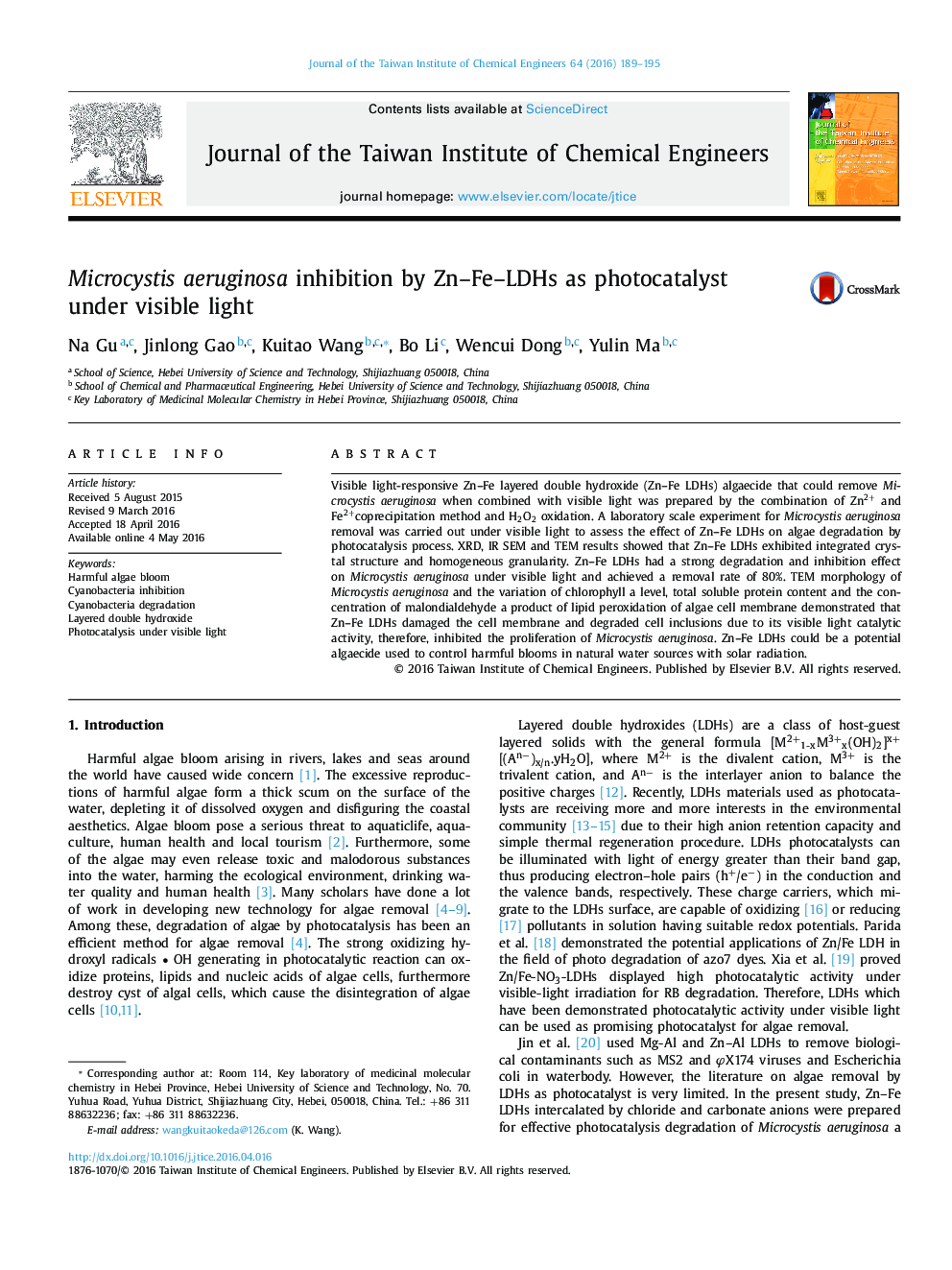| کد مقاله | کد نشریه | سال انتشار | مقاله انگلیسی | نسخه تمام متن |
|---|---|---|---|---|
| 690280 | 1460410 | 2016 | 7 صفحه PDF | دانلود رایگان |

• Zn–Fe LDHs was synthesized by coupling of coprecipitation method and H2O2 oxidation.
• Zn–Fe LDHs was visible light-responsive and high photocatalytic activity.
• Zn–Fe LDHs removed Microcystis aeruginosa by photocatalysis under visible light.
• Zn–Fe LDHs damaged algae cell membrane and degraded inclusions of algae cell.
Visible light-responsive Zn–Fe layered double hydroxide (Zn–Fe LDHs) algaecide that could remove Microcystis aeruginosa when combined with visible light was prepared by the combination of Zn2+ and Fe2+coprecipitation method and H2O2 oxidation. A laboratory scale experiment for Microcystis aeruginosa removal was carried out under visible light to assess the effect of Zn–Fe LDHs on algae degradation by photocatalysis process. XRD, IR SEM and TEM results showed that Zn–Fe LDHs exhibited integrated crystal structure and homogeneous granularity. Zn–Fe LDHs had a strong degradation and inhibition effect on Microcystis aeruginosa under visible light and achieved a removal rate of 80%. TEM morphology of Microcystis aeruginosa and the variation of chlorophyll a level, total soluble protein content and the concentration of malondialdehyde a product of lipid peroxidation of algae cell membrane demonstrated that Zn–Fe LDHs damaged the cell membrane and degraded cell inclusions due to its visible light catalytic activity, therefore, inhibited the proliferation of Microcystis aeruginosa. Zn–Fe LDHs could be a potential algaecide used to control harmful blooms in natural water sources with solar radiation.
Figure optionsDownload as PowerPoint slide
Journal: Journal of the Taiwan Institute of Chemical Engineers - Volume 64, July 2016, Pages 189–195